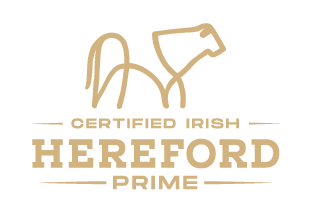Cote de Boeuf with Martin O’Donnell Executive Head Chef, The Twelve Hotel
This is a great centerpiece for any barbecue, the amomatic herbaceous flavour of the chimichurri brings summery freshness to the flank.
Serves: 2 people generously
Cooking time: 2-3 hours
INGREDIENTS
- 1 kg piece of Irish Hereford Prime beef - Dry Aged Cote de Boeuf on the bone nicely trimmed. 21 day aged is best or even more if possible.
- Vegetable oil
- Salt & Pepper
METHOD
- Ideally this is a piece of beef that really suits a sous vide recipe where the meat is placed in a vacuum pouch and submerged in a water bath of 55c with a cooking time of 4 hours, then the beef is removed from the bag and charred on either a hot griddle pan or frying pan cooking with beef fat to add more flavour and also great for cooking with resting is key and I would recommend a resting of minimum 20 minutes on a large piece of beef.
- Or another and possibly the easiest way is “reverse sear“. The seasoned beef is placed onto a rack, and put into an oven at 90c for 2-3 hrs, this evenly cooks the beef throughout to medium rare, allowing moisture to release but also intensifying the beefiness.
- It is then placed into a smoking hot pan with 3 tbsp of vegetable oil to sear, 3 minutes each side and a good knob of butter and some freshly picked thyme spooning the butter over the beef, a really good season of sea salt flakes and cracked pepper and allow to rest on a wire rack. This is key to allow the beef time just to chill out and relax.
- Lay the beef flat on a craving board and carve into thin slices. Serve on a warm plate with some fresh beef dripping chips and some peppery watercress to garnish.
- 2 tbsp Extra Virgin Olive Oil
- 5 Spring Onions (white and green parts, sliced)
- 300g Cherry Tomatoes (halved)
- 2 cloves of Garlic (finely sliced)
- 1/2 tsp Cumin Seed
- 15g Fresh Coriander (stalks included, finely chopped)
- Sea Salt and Freshly Ground Pepper
